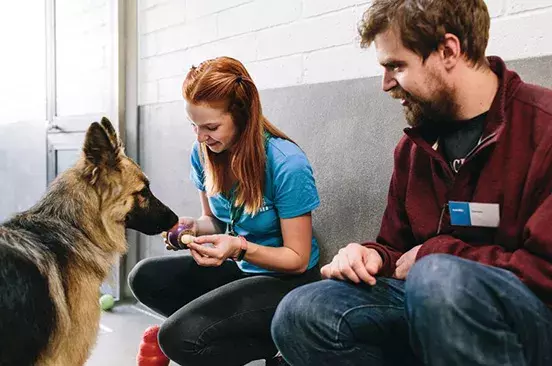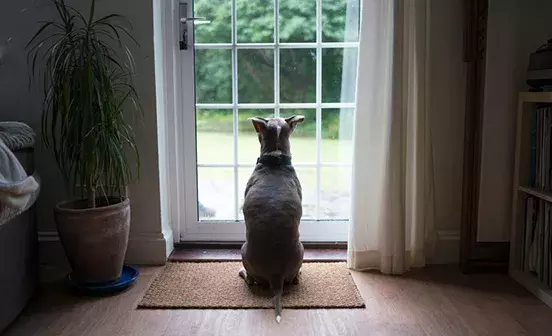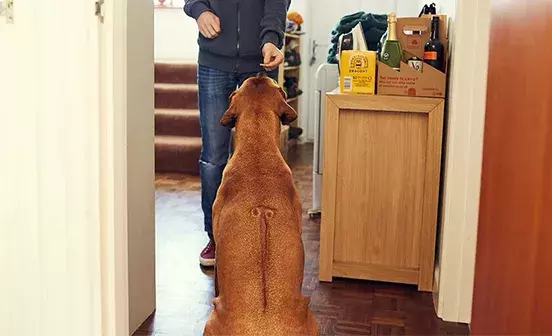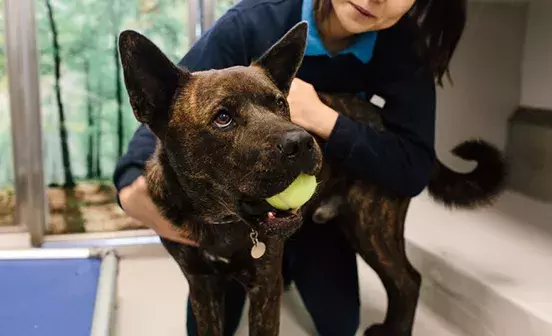Clicker training your dog can be a really good way to get them to focus on what you’re asking them to do. You can use a clicker during training to help your dog recognise when they’ve carried out a behaviour that will lead to a reward.
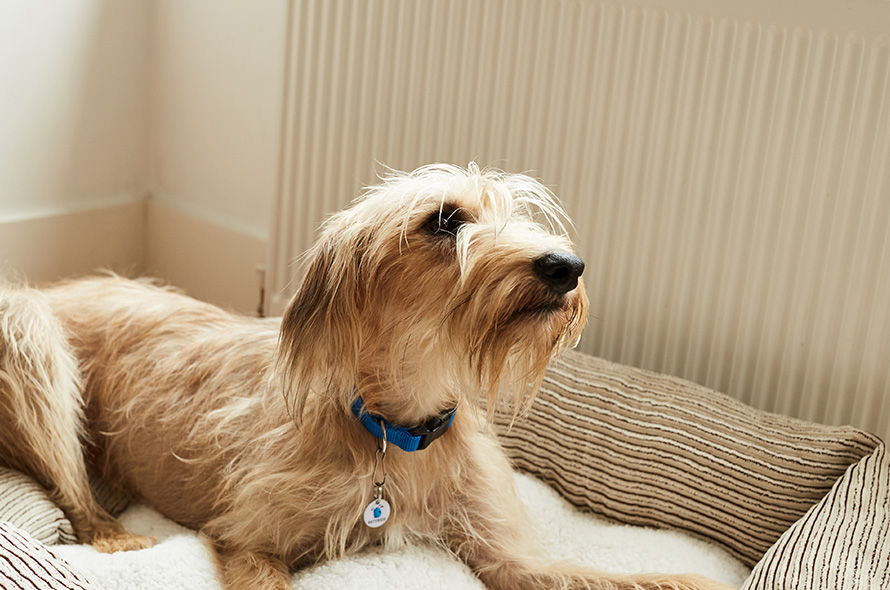
You can also use a marker word for training, such as saying ‘Yes’ but using a clicker can be more predictable for your dog, and they will likely more strongly associate the sound with getting a treat. It’s easy to use marker words throughout the day outside of a training context which can be confusing for your dog, especially if it’s not followed by a reward. Our voices also naturally vary in tone, pitch and volume depending on lots of different things, but the clicker sound is consistent, and your dog will easily recognise it.
If your dog is noise sensitive and the clicker sound is worrying them, you can muffle the sound by clicking the clicker from inside your pocket. If they are still scared of the sound you should use a marker word instead.
Watch our 'Introduction to clicker training' video guide, it's a great way to get started and get your dog used to using the clicker.
Time your clicker correctly
The timing of when you click the clicker is very important. Think of the click like you’re taking a photo of the behaviour that you want. You must only click when your dog is doing the exact action you’ve asked for.
For example, if you ask your dog to sit, but they also bark when they do so, if you click and reward them at this point you will also be encouraging them to bark too. In this instance, you would need to click before they bark, or only click and reward sits when they don’t bark.
The click must come exactly on the desired behaviour and it’s important that you reward your dog within 3 seconds of the click. Try dropping a ball and clicking at the exact moment it touches the floor to practice! It’s harder than it sounds. If you don’t click at right time to reward your dog, this could frustrate them and reduce the effectiveness of the click.
Step 1. Show your dog how the clicker works and what it does
Before you start using a clicker, you will need to associate the ‘click’ with something positive; the reward. This teaches your dog to anticipate their treat after they hear the ‘click’.
Make sure you do this in a calm environment, without any distractions. If your dog is food motivated, you can use some of your dog’s dinner, to avoid using too many treats.
When your dog is nice and calm, simply ‘click’ and follow up with a treat, making sure it’s given within 3 seconds. Repeat this process several times.
Step 2. Start introducing the clicker when your dog does something good
Once you can see that your dog is anticipating the food when they hear the click, you can start introducing the clicker to mark good behaviour.
Ask your dog to do something simple that they already know, such as ‘sit’ or ‘down’. As soon your dog sits, click and reward them. Practice this regularly over a few, short sessions so that you can improve your timing and your dog can get used to using the clicker.
When you’re satisfied that your dog understands what the click means (they should immediately look to where the treats have been coming from), you can then move on to using the clicker to teach new behaviours.
Step 3. Use the clicker as part of dog training
Clicker training is a useful way to get a dog to work out what you want them to do of their own accord. This uses quite a bit of brain power for your dog and is a great way to mentally stimulate them.
To use the clicker, first decide what the final behaviour is that you would like your dog to do, and then break it down into small steps. These should be progressive steps that if all clicked, rewarded and built on in sequence will eventually get you to the final behaviour.
For example, if you are training your dog to sit on a mat, first reward any interest in the mat – click when your dog looks at the mat and then reward. Once they are doing this consistently, wait a few seconds for them to take a step towards the mat, and click and reward the step. Continue until eventually you hold out for a paw on the mat.
From there, then build up from two to three paws, until eventually you are only clicking and rewarding when all four paws on the mat.
The last step would be to ask your dog to sit on the mat, and then to click and reward when they successfully do that. Next you can start ask your dog for a down when then they are on the mat, and only click and reward this.
Check out our advice on teaching your dog to settle for more tips on teaching this behaviour.
Step 4. Be consistent
The key to any dog training is consistency. While it’s important that you only click on the desired behaviour that you are looking for at each step, if you do accidentally click then you should still follow up with a reward. This will make sure that your dog continues to associate the click with being rewarded and won’t undo all of your hard work.
It’s also important to be consistent in how you click. We would advise holding your clicker in the palm of your hand to the side of your body. Don’t hold your clicker like a remote and point it at your dog, as this can be intimidating.
Download these steps as a handy advice sheet and use it to train regularly:
